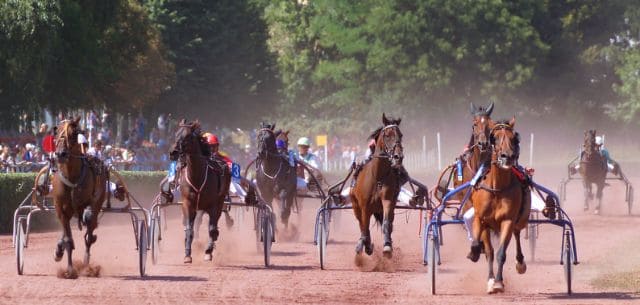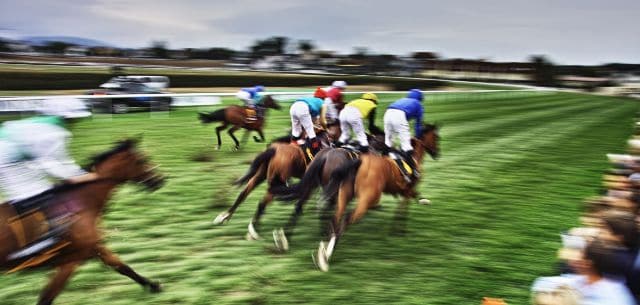There are four general types of horse racing: flat, jump, harness, and endurance racing. Flat and jump racings are under thoroughbred racing, a sport and industry for Thoroughbred horses governed by different national bodies. Jump racing is also known as National Hunt racing in the United Kingdom.




Steps
Other Rules
Winners
The Tevis Cup
Mongol Derby
Other Popular Endurance Races
Aside from flat, jumps, harness, and endurance racing, another type of horse racing is called quarter horse racing. It is how the race and the quarter horse breed came up. It is a less popular and like a sprint type of flat racing but with a shorter distance of 55 yards (a quarter of a mile) or less. Its rules and procedures are generally the same as Thoroughbred horse races. However, timing is to the nearest 1/100 second from a standing start. The American Quarter Horse who runs this race can run a quarter of a mile within as fast as 22 seconds, faster than some of the fastest Thoroughbreds.
Races can also differ based on the horse’ quality. Hence, horse race types are developed. The maiden race, claiming race, allowance race, classic race, stakes race, and handicap race.
Two classes of maiden races:
You can also learn about horse racing breeds and how it is connected with the development of these horse racing types. If you are familiar but not knowledgeable enough with turf, dirt, tapeta, Polytrack, etc., you can also learn further details about these track surfaces. Just click the buttons below and know like a pro bettor.
For more information and facts about horse racing, you can also check our glossary and hit the button below.
Bet on live horse races like a Pro with AmWager.